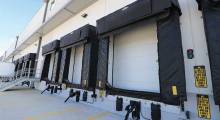Strong momentum for United States-bound waterborne shipments remains in the cards, based on data released by global trade intelligence firm Panjiva this week.
September shipments were up 4.9% annually at 976,605. While this is down compared to August’s 1,066,698, the annual improvement is ahead of August’s 2.2% annual spread. The lower August growth rate was most likely due to disruptions in late August from Hurricane Harvey. Panjiva noted that Harvey may have reduced imports by around 6,500 TEU per day, or 0.6% of the August’s total volume.
On a year-to-date basis through September, Panjiva’s data pointed to a 3.8% annual gain for shipments at 8,612,125. As for all of 2017, the firm expects total shipments to be up 3.1% compared to 2016 at 11.485 million. This full-year prediction is down slightly from a previous estimate of 11.502 million shipments for a 3.2% annual increase.
In a research note accompanying its data, Panjiva observed that the “U.S. trade boom” appears to have continued in September, suggesting that the disruptions from Hurricane Irma earlier in the month were rapidly recovered, adding that September marked the seventh consecutive month of growth, and the 14th month of growth over the last 15 months.
Panjiva Research Director Chris Rogers said in an interview that earlier in the year the concept of countries exporting to the U.S. early were trying to get things in ahead of tariffs, or protectionism efforts, from the Trump administration, which, to date, has not been forthcoming.
“Consequently, what we are seeing is good old economic strength that has driven growth,” he said. “It is not a done deal when it comes to protectionism, but for now and over the next couple of months, it seems less likely that protectionism efforts will bring things to a near-term end. There are risks, too, like the NAFTA talks going on at the moment and the coming Trump visit to Asia in November. What we have found in the past is that Trump talks a big story but when he meets with other heads of state, he becomes more moderated in his tone.”
Looking at retailers, exporters, and shippers in advance of the upcoming holiday season, Rogers said things vary by sector.
While imports of toy shipments have been down over all, it is not solely because of Toys R Us’s financial issues, as it may be due to other retailers struggling and taking a more conservative approach to providing inventory, he said.
Steel shipments to the U.S. remained strong, with an 8.3% gain in September and up for the seventh consecutive month, with Panjiva noting that action on tariffs on a broad basis has been delayed until accord on a tax reform has been reached. The firm also stated that imports of autos and parts saw their first decline in six months, falling 0.9%.
Looking at U.S-bound waterborne shipments by exporting country in September, Panjiva found:
- the fastest growing supplier nation was again Vietnam, up 11.5% annually and up 15.5% over the prior quarter;
- shipments from Mexico were up 12.3%, with Panjiva saying this likely also reflects shipments that may have been disrupted by storms in August or have had to move by sea due to earthquake damage to infrastructure;
- imports from China and Japan remained strong, seeing at 8.2% gain, with the firm noting that any lack of sign of a slowdown is expected to overshadow President Trump’s upcoming visit to China; and other Asian countries did not see similar gains, with shipments from Taiwan, Singapore, and Japan seeing a “sustained decline
Article topics








